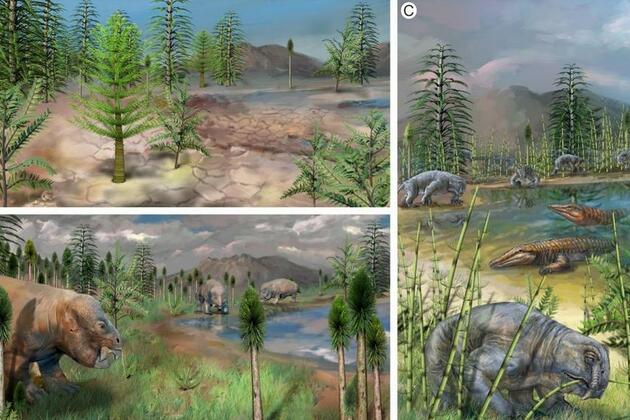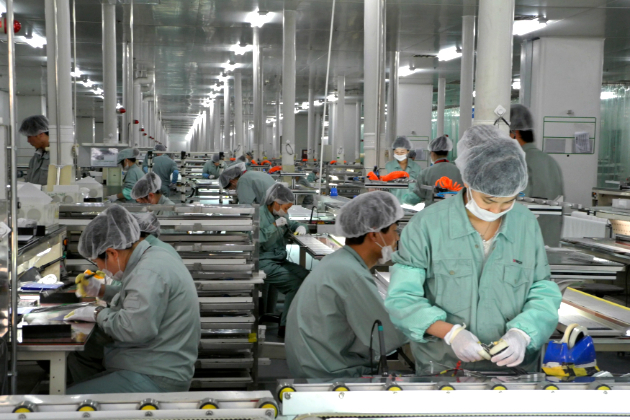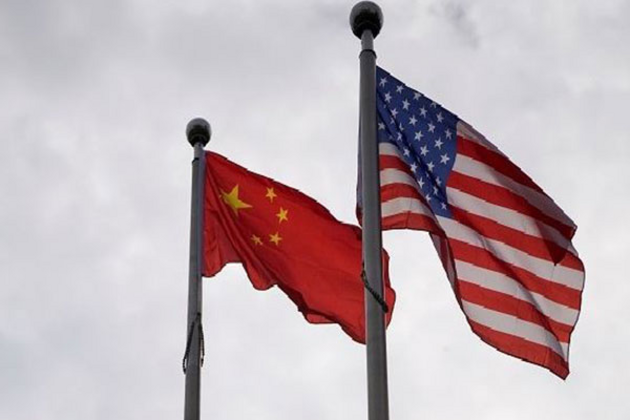Study finds "oasis of life" thrived in NW China during Earth's worst mass extinction
Xinhua
14 Mar 2025, 13:29 GMT+10

NANJING, March 14 (Xinhua) -- A new study has revealed that a region of the Turpan-Hami Basin in northwest China's Xinjiang Uygur Autonomous Region was an "oasis of life" for terrestrial plants during a catastrophic biological crisis that occurred on Earth about 252 million years ago.
The study, led by researchers from the Chinese Academy of Sciences' Nanjing Institute of Geology and Palaeontology, was published in the Science Advances journal on Thursday.
The mass extinction event, which took place at the end of the Permian Period 252 million years ago, wiped out over 80 percent of marine species. Its impact on terrestrial ecosystems has been a subject of intense debate. A dominant theory posits that massive volcanic eruptions in Siberia caused widespread devastation on land through wildfires, acid rain, increased UV-B radiation and toxic gases.
Challenging this widely accepted view, the new study presents the first definitive fossil evidence of a terrestrial plant community that remained largely undisturbed throughout the extinction event. This resilience allowed for continuous evolution and facilitated a rapid ecological recovery in the aftermath.
By analyzing fossils unearthed from the South Taodonggou section of the Turpan-Hami Basin, the researchers discovered that the overall extinction rate of spore and pollen species in this region was approximately 21 percent -- far lower than the marine extinction rate during the same period. Furthermore, they uncovered a continuous record of riparian fern fields and coniferous forests that thrived from 160,000 years before the extinction began until 160,000 years after it concluded.
The study highlights the critical role that this stable vegetation base played in the swift recovery of the local ecosystem. Fossil evidence indicates that within just 75,000 years following the extinction event, diverse tetrapods such as lystrosaurus and chroniosuchians inhabited the area. This rapid resurgence of a complex food web is in stark contrast to previous estimates that ecosystem recovery post-Permian extinction took over a million years. The new findings suggest that ecological diversity in this region rebounded more than 10 times faster than in other areas.
The researchers attribute this remarkable resilience to the region's stable, semi-humid climate. Analysis of paleosol matrices reveals that the area consistently saw about 1,000 millimeters of rainfall annually during this period. This consistent precipitation made South Taodonggou more verdant and habitable than other regions following the mass extinction at the end of the Permian Period, providing essential support for migrating animals.
Despite its proximity to the volcanic activity that triggered the extinction event, the Turpan-Hami Basin emerged as a sanctuary for terrestrial life.
"This demonstrates that even seemingly perilous locations can harbor vital biodiversity," noted Wan Mingli, a professor at the Nanjing Institute of Geology and Palaeontology.
"This discovery underscores how local climate and geographic factors can create surprising pockets of resilience, offering hope for conservation efforts amid global environmental changes," said Liu Feng, another professor at the institute.
 Share
Share
 Tweet
Tweet
 Share
Share
 Flip
Flip
 Email
Email
Watch latest videos
Subscribe and Follow
Get a daily dose of Hong Kong Herald news through our daily email, its complimentary and keeps you fully up to date with world and business news as well.
News RELEASES
Publish news of your business, community or sports group, personnel appointments, major event and more by submitting a news release to Hong Kong Herald.
More InformationChina
SectionWalmart faces pushback as it asks Chinese suppliers to cut prices
BENTONVILLE, Arkansas: Walmart is pressuring some Chinese suppliers to cut prices in response to President Donald Trump's imposed U.S....
China targets 5 percent growth for 2025 amid economic uncertainty
BEIJING, China: China has set an economic growth target of around five percent for 2025, signaling efforts to stabilize the economy...
Study finds "oasis of life" thrived in NW China during Earth's worst mass extinction
This image shows the reconstruction of the terrestrial landscape before (B), during (A), and after (C) the mass extinction at the end...
(SP)CHINA-BEIJING-SHORT TRACK SPEED SKATING-WORLD CHAMPIONSHIPS-MEN'S 1500M(CN)
(250314) -- BEIJING, March 14, 2025 (Xinhua) -- Sun Long of China competes during the men's 1500m quarterfinals at the ISU World Short...
Xinhua Photo Daily | March 14, 2025
BEIJING, March 14 (Xinhua) -- A selection of the best press photos from Xinhua. An aerial drone photo taken on March 13, 2025 shows...
Business leaders predict sharp decline in Chinese exports due to US tariff dispute
Beijing [China], March 14 (ANI): Business leaders and economists have warned that China's exports are likely to suffer significantly...
Business
SectionTravel to and from Israel to be boosted by terminal reopening
The principal terminal, Terminal 1, at Israel's largest airport will reopen at the end of this month, having largely been closed since...
Tech stocks lead renewed selling on Wall Street
NEW YORK, New York - The knee-jerk introduction of trade tariffs by President Donald Trump continues to rattle markets with all the...
Ford to invest up to $4.8 billion to revive struggling German unit
FRANKFURT, Germany: Ford announced this week that it will inject up to $4.8 billion into its struggling German unit to stabilize its...
Boeing links worker bonuses to company-wide performance
SEATTLE, Washington: Boeing has revamped its employee incentive plan, tying annual bonuses for more than 100,000 workers to overall...
US, Canadian farmers face rising fertilizer costs amid trade tensions
WINNIPEG, Manitoba: Farmers in the U.S. and Canada are bracing for soaring fertilizer prices as trade tensions escalate between the...
U.S. stocks stabilize after relentless losses
NEW YORK, New York - A slightly lower-than-expected CPI reading for February helped U.S. stocks to stabilize after some relentless...












